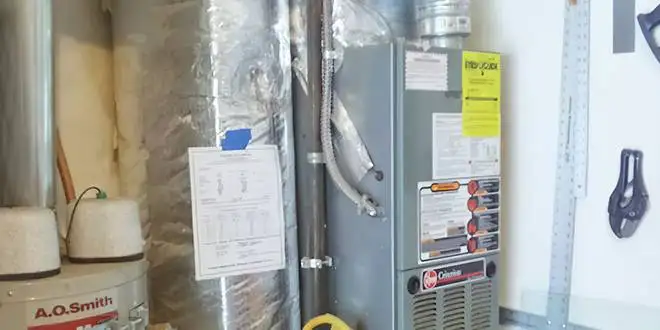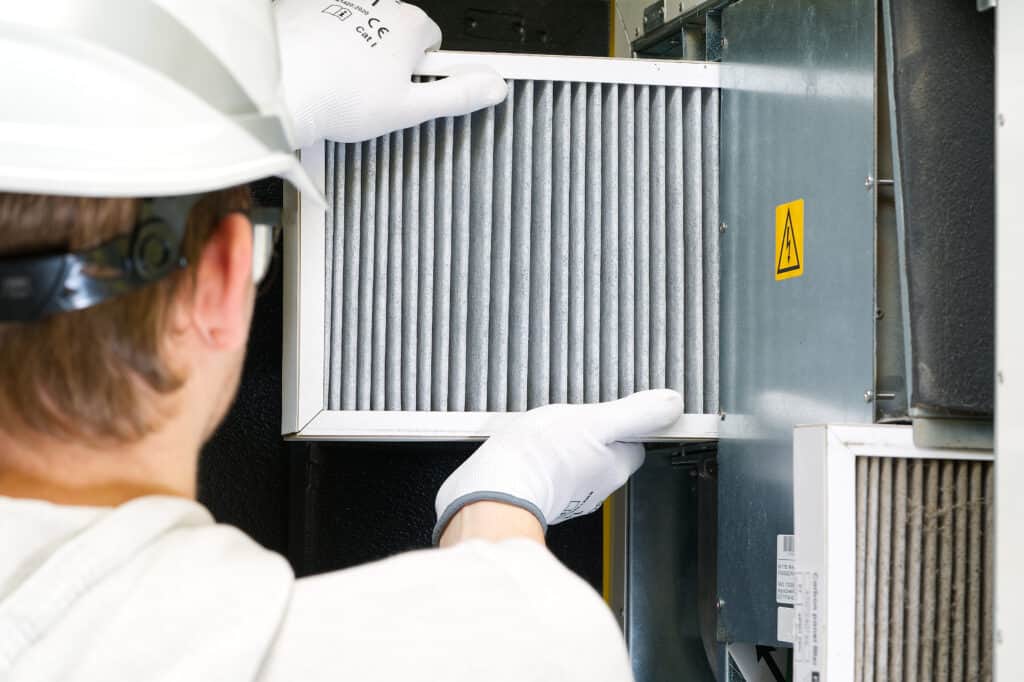
For homeowners and business owners in Portland, OR, selecting the right furnace size is crucial for comfort, efficiency, and energy savings. This guide will walk you through calculating the perfect furnace size for your home, ensuring warmth throughout the chilly seasons without overspending on energy bills.
Understanding Furnace Sizing
Before diving into calculations, it’s essential to understand why furnace size matters. A furnace that’s too small won’t keep your home comfortably warm, while one that’s too large will cycle on and off more frequently, reducing efficiency and lifespan. Proper sizing ensures optimal performance, comfort, and energy usage.
The Basics of Calculating Furnace Size
Calculate Your Home’s Square Footage
The first step in determining the right furnace size is to calculate the total square footage of the space needing heating. Measure the length and width of each room and multiply them together, then add up the totals for all rooms.
Understand BTUs
A BTU, or British Thermal Unit, measures the amount of heat required to raise the temperature of one pound of water by one degree Fahrenheit. Furnaces are rated by the number of BTUs they can produce in an hour. Generally, you need between 30 to 60 BTUs per square foot of space in a moderate climate like Portland’s.
Consider Your Home’s Insulation
Good insulation retains heat more effectively, reducing the need for a higher BTU output. Evaluate your home’s insulation levels, especially in older homes that might be less efficient. An energy audit can provide detailed insights into your home’s insulation effectiveness.
Factor in Ceiling Height
Standard BTU calculations assume an 8-foot ceiling. If your ceilings are higher, you’ll need to adjust the calculation because higher spaces require more heat. A simple adjustment is to increase the BTU requirement by 20% for every additional 2 feet of ceiling height.
Account for Windows and Doors
Windows and doors can be significant sources of heat loss. If your home has large, single-pane windows or older doors, you may need a furnace with a higher BTU rating to compensate.
Climate Zone Adjustments
Portland falls into a moderate climate zone, but specific conditions in your area might necessitate adjustments. Use climate zone maps to fine-tune your BTU requirements based on local weather patterns.
Advanced Considerations
Household Dynamics
Consider the number of occupants and your typical thermostat settings. More people means more heat generation from bodies, potentially reducing heating needs.
Use of Space
Rooms with high traffic or that are used more frequently may need more heating. Conversely, seldom-used spaces might not need as much warmth.
Energy Efficiency Upgrades
If you plan to make your home more energy-efficient with upgraded windows, insulation, or sealing leaks, factor these improvements into your calculations. They can significantly reduce the need for heating.
The Calculation Process
To calculate the correct furnace size for your home, follow these steps:
Total Square Footage: Sum the square footage of all rooms to be heated.
Basic BTU Requirement: Multiply the total square footage by the BTU per square foot suitable for your climate and home’s characteristics (30-60 BTUs per square foot is a good starting point).
Adjust for Ceiling Height: Increase your BTU total for any rooms with ceilings over 8 feet.
Factor in Insulation and Windows: Adjust your calculation based on the quality of your home’s insulation and the type and size of your windows.
Final Adjustments: Make any final adjustments based on household dynamics, use of space, and planned energy efficiency upgrades.
Professional Assessment
While DIY calculations can give you a ballpark figure, a professional assessment is invaluable. HVAC experts, like those at Ultimate Comfort, use detailed calculations considering all factors mentioned and more, ensuring you get the most accurate sizing for your gas furnace.
Conclusion
Choosing the right size furnace is critical for maintaining a comfortable, energy-efficient home in Portland, OR. By understanding and applying the basic principles of furnace sizing, you can make an informed decision. However, for the most accurate assessment, consulting with a professional is recommended.

FAQ: Furnace Sizing
Q1: Why is it important to size a furnace correctly?
A1: Correctly sizing a furnace is crucial for several reasons. A furnace that’s too small won’t adequately heat your home, leading to uneven heating and discomfort during cold weather. Conversely, a furnace that’s too large will cycle on and off more frequently, reducing its efficiency, increasing wear and tear, and potentially shortening its lifespan. Proper sizing ensures optimal comfort, energy efficiency, and longevity of the system.
Q2: How is furnace size measured?
A2: Furnace size is typically measured in BTUs (British Thermal Units). A BTU is a unit of heat that’s used to measure the energy your furnace can produce in an hour. The size of the furnace you need depends on the total BTUs required to heat your home effectively.
Q3: What factors affect furnace sizing?
A3: Several factors can influence the size of the furnace you need, including:
- The square footage of your home.
- The climate zone where you live.
- Your home’s insulation quality.
- Ceiling heights.
- The number and quality of windows and doors.
- The layout and design of your home.
- Household occupancy and lifestyle habits.
Q4: Can I use a simple formula to calculate the furnace size I need?
A4: While there are basic formulas (e.g., square footage multiplied by BTUs per square foot) that can give you a rough estimate, they don’t account for all the variables that can affect furnace sizing. It’s best to consult with a professional HVAC technician who can perform a more comprehensive assessment.
Q5: What is a Manual J calculation, and do I need one?
A5: A Manual J calculation is a detailed process used by HVAC professionals to determine the precise heating and cooling requirements of your home. It considers all relevant factors, including those listed above, to recommend the ideal furnace size. Getting a Manual J calculation is highly recommended for accurate furnace sizing.
Q6: How does my home’s insulation affect furnace sizing?
A6: Good insulation helps retain heat, meaning you may need a smaller furnace to maintain a comfortable temperature in your home. Conversely, poor insulation may require a larger furnace to compensate for heat loss. An energy audit can help you understand your home’s insulation effectiveness and its impact on furnace sizing.
Q7: What if my home has high ceilings?
A7: High ceilings increase the volume of space that needs to be heated, which can affect furnace sizing. You may need a furnace with a higher BTU output to adequately heat rooms with ceilings higher than the standard 8 feet.
Q8: Can I just replace my old furnace with a new one of the same size?
A8: Not necessarily. If your previous furnace was incorrectly sized or if there have been changes to your home (such as additions, improved insulation, or window upgrades), the old size may no longer be appropriate. It’s best to perform a new calculation or consult an HVAC professional to determine the right size for your current needs.
Q9: How does the climate in Portland, OR, affect furnace sizing?
A9: Portland’s moderate climate means that extreme cold is less common, but proper heating is still essential for comfort during the winter months. The specific climate considerations will affect the BTU range suitable for your home, typically on the lower end of the scale compared to colder regions.
Q10: Should I consider future home improvements when sizing a furnace?
A10: Yes, if you plan to make significant changes that could affect your heating needs, such as adding rooms, improving insulation, or replacing windows, it’s wise to consider these in your furnace sizing. Planning for the future can help ensure your new furnace will meet your home’s needs for years to come.
🏡 Warm Up with Ultimate Comfort 🏡

Ready to ensure your home stays cozy and warm without overspending on energy bills? Let Ultimate Comfort guide you to the perfect furnace size for your home. With our expertise and commitment to your comfort, we’ll help you navigate the complexities of furnace sizing, ensuring you make the best choice for your space. We also offer heating and cooling installation, repair, and maintenance. Reach out today and take the first step towards a warmer, more efficient home. 🔥💼🌟


